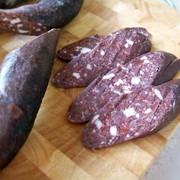In order to carry out glazing work "of all perfection", in 1694 the government moved a furnace located in Palazzolo (VC) to Turin. Headed by Antonio Pisani, the company found space in the bastion of St. Anthony Abbot, near the Brotherhood of SS. Annunziata, between the current Accorsi Museum of Via Po, the Liceo Gioberti and the New Palace of the University, in a neoclassical building attributed to the architects Ceroni and Bonsignore.
Production was interrupted, due to war, in 1704 and stayed that way for several years since it was harmful for the city to reactivate a factory that consumed so much timber. Only in 1718, at the conclusion of war, Pisani was allowed to resume activity and the Crosa brothers to implant a factory with workshop, warehouse and kilns just outside the city, along the Po. Both the Pisani in Borgo Po and Crosa's activities were however forced to decline due to lack of space and supply of wood, which would cause poor production. In 1759, the production plant was therefore transferred in the Pesio Valley.
The Royal Factory was established by the state of Savoy in 1759 and managed half by the state and half by external partners. In the old settlement remained a department as sales store, with cellars, a small furnace and hot casting basin for special artifacts; the adjacent building, with beautiful frescoed ceilings, was used as Cav. Giuseppe Avena's home in Turin, who, after the acquisition in 1801 of the state-owned complex by the company Saroldi C., was left sole owner in 1825.
The company became one of the most famous and qualitatively important glassworks in Europe. The factory produced many pieces, including plates for windows, vases, glasses, bottles, blown glass and crystal. The products were sold in Turin, in the warehouse of Piazza Vittorio. For the high quality of its crystals, it obtained prestigious awards at 'Paris Exposition' in 1806, with the silver medal.
The Chiusana ceramic industry, was born in 1833 by initiative of Michele Giordana - an architect from Cuneo. The white majolica factory, in few years, transformed Chiusa in an important center for ceramics manufacture, relying mainly on the traditional skills of its people, already known, also in France, for the famous and resistant Chiusani dishes. Hand decorated with foam pads, printed or with mask, Chiusani artifacts were sold in Italy and abroad. The factory closed in 1984, ending a long tradition of craftsmanship and art that has exported the name of Chiusa well beyond regional boundaries.
The Museum of the Royal Factory of Crystals and Ceramics Chiusa Pesio
It was set up in 2004 thanks to the donation of private collections and a careful work of historical research carried out by the Municipality and by the cultural association Chiusa Antica. The museum shows visitors the history of the manufacturing process and production, with the intention to create and convey the emotions that the artifacts and the success of the Chiusa Factory aroused among citizens and workers.
The first room, on the ground floor, is dedicated to the history and diffusion of the glass. In the next room, a three-dimensional model, along with some video installations, provides information on the structure of the factory and work organization. Visitors can also admire, exhibited in glass cases in the middle of the rooms, the most valuable artifacts of the factory. Some climatized windows at the wall, exhibit archival documents and drawings on the history, construction and the events of the factory.
The upstairs rooms display ceramics and terracotta objects belonging to the Chiusana ceramic production, with pieces dating from the early nineteenth century to the mid-twentieth century in the typical artisan tradition of Piedmont;they also host the exhibition of the "Bronzes of Mount Cavanero".
Information:
Address: Antico Palazzo Comunale
Disabled access: Yes
Audioguide: Yes
Group visits: Yes
Educational visits: Yes
Museum subscription: Free entrance
Opening hours: October to March (from 01/10 to 31/03): Tuesday-Saturday 9:30 a.m. to 12:00 p.m. , 3:30 p.m. -5.30 p.m. ; Sunday, Monday closed. From April to September (from 01/04 to 30/09): Tuesday-Saturday 9:30 a.m. to 12:00 p.m. , 3:30 p.m. to 5:30 p.m. ; Sunday 9:30 a.m. to 12:30 p.m. , 3:00 p.m. to 6:00 p.m.; Monday closed
Closures annual holidays: January 1, January 6, Easter, Easter Monday, 1st May, August 15, November 1 December 8, December 25th, December 31st
Special opening: April 25
Access: Free entrance

![#ChiusaPesio, the #Museum of the Royal Factory of #Crystals and #Ceramics celebrates 10 years [VIDEO] #ChiusaPesio, the #Museum of the Royal Factory of #Crystals and #Ceramics celebrates 10 years [VIDEO]](https://www.italyrivieralps.com/typo3temp/pics/c_4d3378a68e.jpg)













